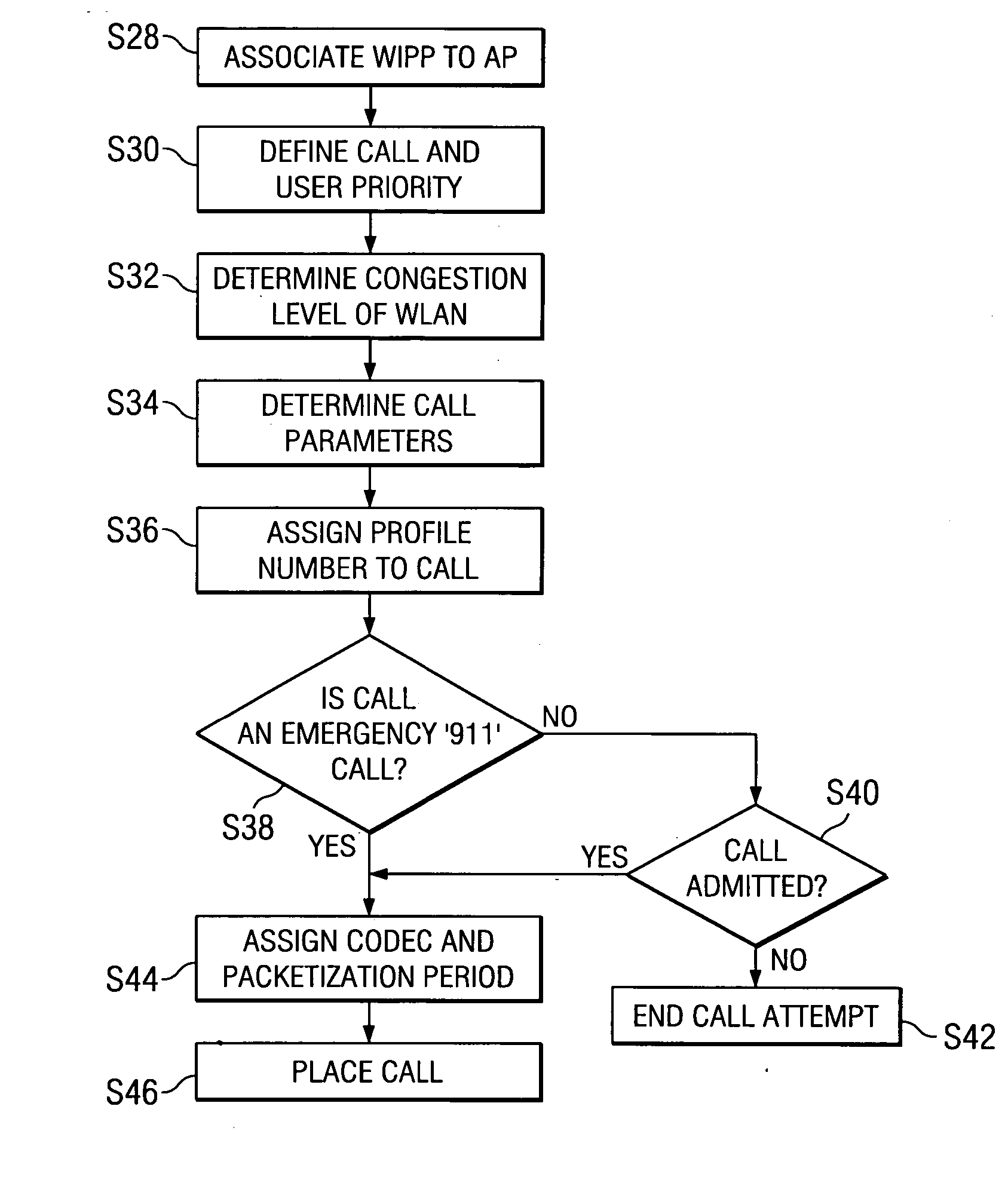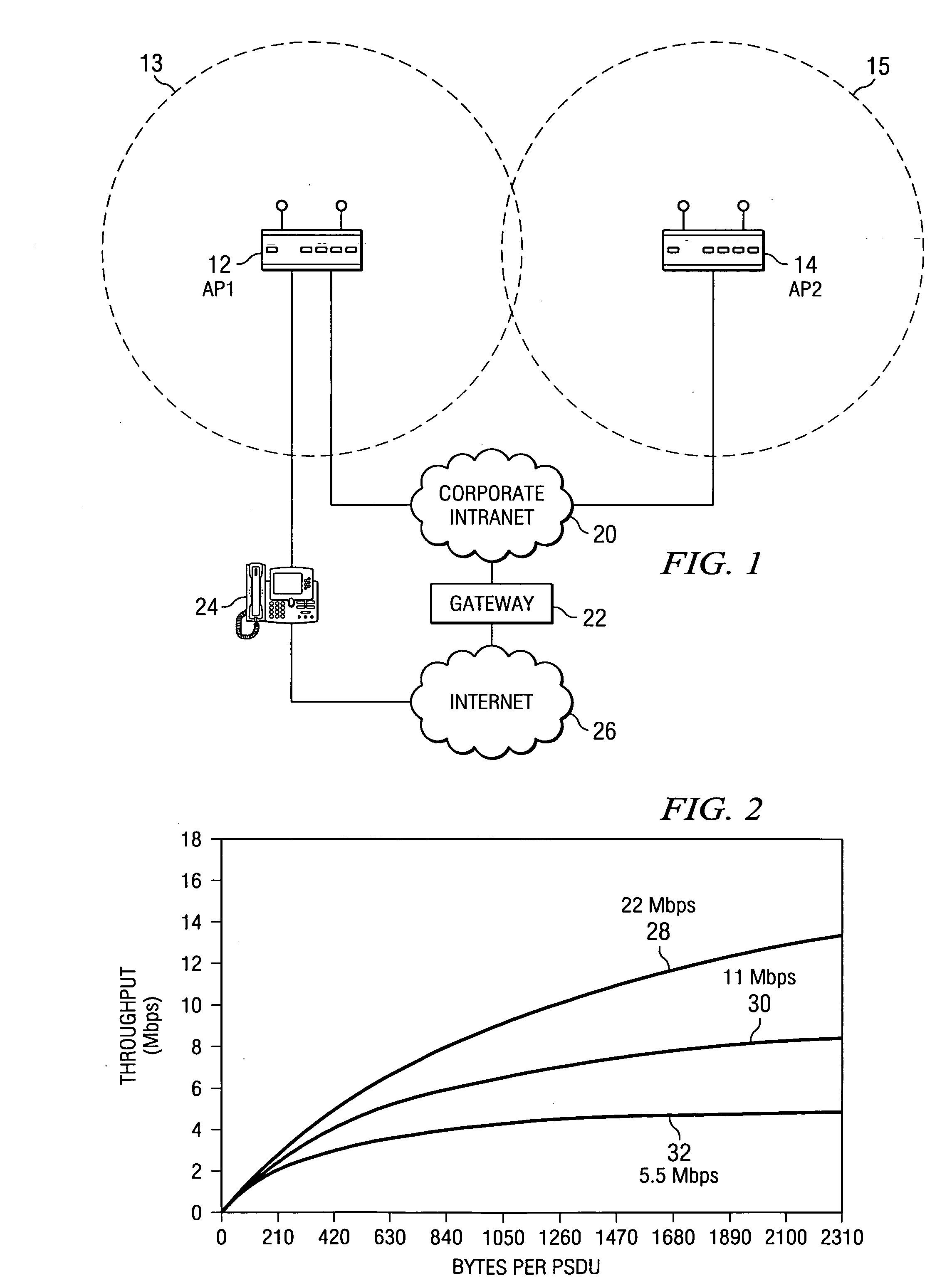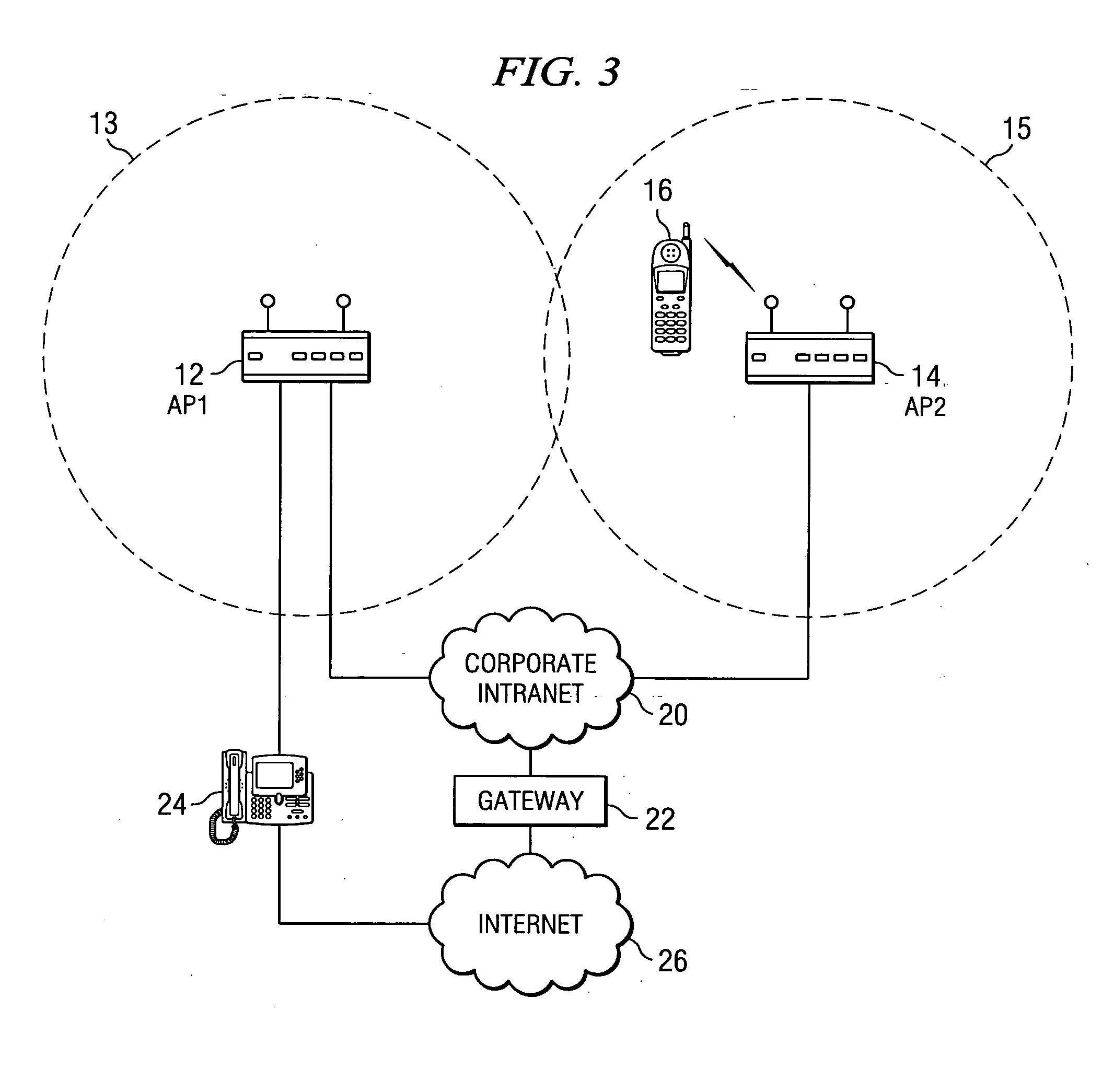Call parameter selection and self-enforced admission control for optimizing voice over internet protocol performance in wireless networks
- Summary
- Abstract
- Description
- Claims
- Application Information
AI Technical Summary
Benefits of technology
Problems solved by technology
Method used
Image
Examples
Embodiment Construction
[0023] The preferred embodiment of the present invention includes a technique to optimize voice over Internet Protocol (VoIP) performance in a wireless local area network (WLAN) by basing a decision of admission control and the value of end-to-end delay for a call that the BSS (Basic Service Set) can support on the congestion level in a BSS and priority level of the call. One implementation of the preferred embodiment is on an IEEE 802.11 wireless local area network (WLAN).
[0024]FIG. 3 illustrates a diagram of the enterprise WLAN network of FIG. 1 that with a WIPP (Wireless Internet Protocol Phone, or IP Phone) 16 associated with an access point (AP) 14. The exemplary network may be an IEEE 802.11 wireless local area network that is typically is employed by a commercial office, industrial complex, or academic facility and includes corporate intranet 20 that routes VoIP calls through Internet 26. For implementing voice capability, a wireless LAN may use multiple access points and mu...
PUM
 Login to View More
Login to View More Abstract
Description
Claims
Application Information
 Login to View More
Login to View More - Generate Ideas
- Intellectual Property
- Life Sciences
- Materials
- Tech Scout
- Unparalleled Data Quality
- Higher Quality Content
- 60% Fewer Hallucinations
Browse by: Latest US Patents, China's latest patents, Technical Efficacy Thesaurus, Application Domain, Technology Topic, Popular Technical Reports.
© 2025 PatSnap. All rights reserved.Legal|Privacy policy|Modern Slavery Act Transparency Statement|Sitemap|About US| Contact US: help@patsnap.com



